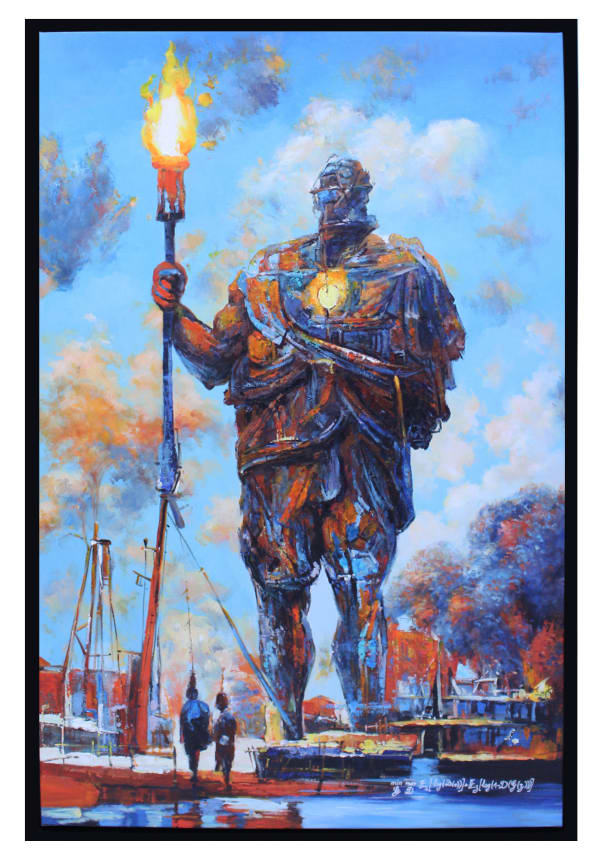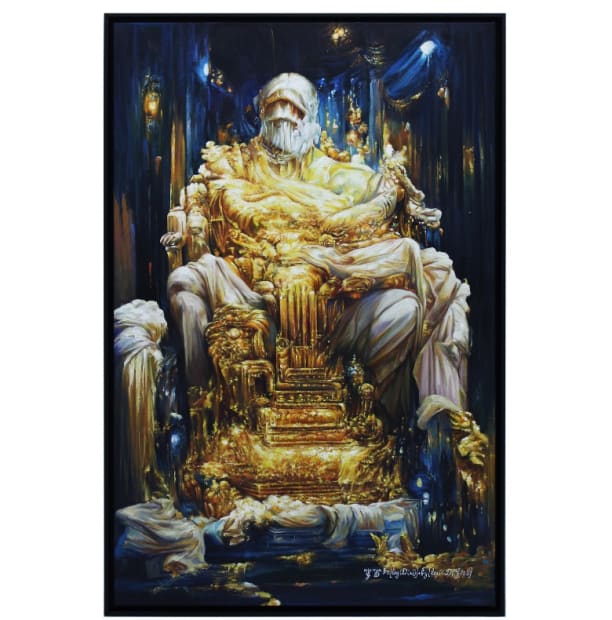-
“While other artists use paint or a camera, we use AI algorithms.
This is our working tool.” – ObviousDanysz Paris-Marais is pleased to present the first solo exhibition of Obvious, the French trio of artists and researchers behind the major auction sale of the first work of art using artificial intelligence by the renowned Christie's in 2018. The creatives who have marked an eminent turning point in the history of art market and who were named in 2020 among the "30 Under 30" by Forbes, which described them as "geniuses", dive us into the world of GANism, unveiling their brand new series composed of oil paintings on canvas along with NFT artworks from December 3, 2022 to January 14, 2023.
-
-
 Obvious, Hanging Gardens of Babylon 1.1, 2022 - Oil on canvas - 100 x 100 cm
Obvious, Hanging Gardens of Babylon 1.1, 2022 - Oil on canvas - 100 x 100 cm -
-
"We, Obvious, explore, use and share the different ways machine learning algorithms can empower our natural creativity. The notion of creativity is extremely hard to encapsulate, as it seems to be a process implying a number of factors which are not yet properly defined."
- Obvious -
 Obvious, Great Pyramid of Giza 1.1, 2022 - Oil on canvas - 100 x 100 cm
Obvious, Great Pyramid of Giza 1.1, 2022 - Oil on canvas - 100 x 100 cm -
-
-
"Through the replication of human behavior in a creative context, we see algorithms as a fascinating tool to dig into and better understand the different forces at stake in the process of creating something new, unique and innovative."
- Obvious -
-
 Obvious, Statue of Zeus at Olympia 1.1, 2022 - Oil on canvas - 125 x 80 cm
Obvious, Statue of Zeus at Olympia 1.1, 2022 - Oil on canvas - 125 x 80 cm -
 Obvious, Colossus of Rhodes 1.1, 2022 - Oil on canvas - 125 x 80 cm
Obvious, Colossus of Rhodes 1.1, 2022 - Oil on canvas - 125 x 80 cm -
"By staying up to date with the latest research and finding artistic applications to the tools being discovered, we also bring knowledge and future perspective to the world, by reducing the gap between research and applications. Science and art have always been complementary."
- Obvious -
 Obvious is a French collective of artists and researchers composed of Hugo Caselles-Dupré (1993), Pierre Fautrel (1993) and Gauthier Vernier (1993). Their work has been presented in numerous institutions: National Art Museum of China (Beijing, 2019), King Fahd Cultural Centre (Ryad, 2019), Hermitage Museum (Saint Petersburg, 2019), Haus der Kunst (Munich, 2020), Cité des Sciences et de l'Industrie (Paris, 2021), Rencontres d'Arles (Arles, 2022) or K11 Art Museum (Hong Kong, 2022). Their works are present in many private collections. They live and work in Paris.
Obvious is a French collective of artists and researchers composed of Hugo Caselles-Dupré (1993), Pierre Fautrel (1993) and Gauthier Vernier (1993). Their work has been presented in numerous institutions: National Art Museum of China (Beijing, 2019), King Fahd Cultural Centre (Ryad, 2019), Hermitage Museum (Saint Petersburg, 2019), Haus der Kunst (Munich, 2020), Cité des Sciences et de l'Industrie (Paris, 2021), Rencontres d'Arles (Arles, 2022) or K11 Art Museum (Hong Kong, 2022). Their works are present in many private collections. They live and work in Paris. -
Stay tuned for more
If you wish to be informed privately of Obvious new projects and art in advance, please email us
Welcome to our new website
We are glad to present you with our new website. Designed as a tool for more dialogue and discoveries around the artists we love, represent and support. We would be glad to hear from you about the parts you prefer and the ones you’d wish us to add. Certain time call for action, and we believe these will also call for more sharing and things done together. Do not hesitate to contact us so we can keep on growing… together.
* denotes required fields
We will process the personal data you have supplied in accordance with our privacy policy (available on request). You can unsubscribe or change your preferences at any time by clicking the link in our emails.












